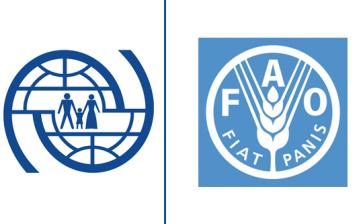COX’S BAZAR, March 16, 2018 (BSS) – A farming initiative, backed by the UN Food and Agriculture Organization (FAO) and IOM, the UN Migration Agency and funded by the US State Department’s Bureau of Population, Refugees and Migration (PRM), is bringing new opportunities and improving nutrition for families living on the Bangladesh-Myanmar border, an IOM release said.
“I used to plough my land with a spade. This will make it much easier,” said Ayesha Begum, trying out the controls of a new mechanical power tiller.
“I can grow more produce and sell some at market and use some myself. It will bring a little profit, but if people can buy things from me at a good price and live better, that will make me happy,” added the 35-year-old small- scale farmer.
Ayesha’s machine is one of dozens being given to 24 community agricultural associations in the Teknaf and Ukhiya sub-districts of Cox’s Bazar, Bangladesh, as part of a USD three million programme to support agricultural livelihoods and forestry in the area.
As well as power tillers, farmers involved in the project are receiving seeds to produce high-nutrient vegetables, such as spinach and amaranth. They are also receiving high-efficiency water pumps and organic fertilizer to reduce exposure to harmful chemicals.
Through the programme, 500 local farming families will be supported to improve their livelihoods and provide nutritious food to the Rohingya community, where people are largely reliant on food rations and malnutrition is rife.
In the past six months, almost 700,000 Rohingyas have fled violence in Myanmar. Since the influx began, local residents in the Cox’s Bazar area have struggled with significant challenges from overstretched infrastructure to major hikes in food prices.
Vast swathes of formerly protected forest have been cleared as Rohingya refugees sought land on which to put up shelters and cut firewood for cooking. What was once home to plants and wildlife, including endangered Asian elephants, is now a makeshift city built on barren slopes. Locals, who formerly relied on the forests for additional food and income sources, can no longer do so.
“Not just agriculture, but education, health, and community infrastructure… are under tremendous pressure because of the influx,” said Mohammad Abul Kalam, Commissioner of the Refugee Relief and Repatriation Commission in Cox’s Bazar. “Thanks to IOM and FAO, this [project] is aimed at compensating some of the losses suffered by farmers in Ukhiya and Teknaf,” he added.
“The initiative has three main aims: to provide high quality, nutritious food; increase income for local farmers; and improve the quality of life for everyone in this area. This is part of a five-year project with the agriculture and forestry departments, which will also include regeneration of the local forest,” said Peter Agnew, FAO’s Emergency Response Coordinator in Cox’s Bazar.
“The host community here in Cox’s Bazar has extended a very generous welcome to the refugees in their time of need. However, there is no doubt that the sudden and rapid arrival of almost 700,000 people in the past six months have added further pressure on the local population and infrastructure,” said Manuel Pereira, IOM Emergency Coordinator in Cox’s Bazar.
“Supporting host communities with projects such as this bring multiple benefits and forge positive interactions between them and the refugees. It allows local farmers to improve their livelihoods while developing sustainable ways to meet the vital nutritional needs of the refugee population,” he added.



